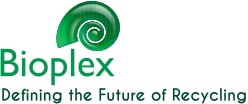
Test 3 - Tuesday 22nd November 2005 at 10.30
Fruit & Vegetable Waste


1.21 tonnes of fruit and vegetable waste, with wooden crates and cardboard boxes, with a volume of approx 103 metres was chopped and mixed by a Shelbourne Reynolds Powermix wagon.
This was tractor powered via a PTO.
The waste temperature was 8.5°C
Waste Chopped & Placed in Portagester


The waste material in the chopper mixer, after 30 minutes was now approximately 23 metres. This is tipped into the 7 tonne Portagester® and 5 tonnes of active liquor added.
The contents were mixed with an externally mounted Vaughan chopper pump. The contents were heated to at least 57°C.
A few lemons escaped the chopper pump, this can be remedied by the repositioning of the intake nozzle.
Pasteurisation & Digestion


At 40 hours after loading and the process started, the Portagester® was drained. Liquor with volatile solids is piped into an underground anaerobic digester. About 4.5m3 of solids remain. This is due to the paper and cardboard absorbing liquid.
The advantages are:
- The whole AD system has little or no excess liquor to deal with.
- Nutrients are stored within the fibre, as a slow release fertiliser.
- The AD system is less likely to suffer from chemical overload.

Temperature and time recording of the process at
18.34 - Thursday 24th November 2005
The recorded temperature and time is within ABPR 2005 for the anaerobic digestion of food waste.
(The Portagester® and AD system at Windover Farm, Longstock, Hampshire has datalogging of three probes within the Portagester® vessel, in addition it can record temperatures of ambient air, heating water-flow and return and the biogas digester).
Friday 25th November 2005


The Portagester® pasteurisation and first stage digestion process was completed within two days.
This was tipped out on the 25th November.
Tuesday 6th December 2005


The same pile of digested fruit and vegetable waste. Note the change of colour due to oxidation.
The plastics from the packaging and the larger wood fragments remain the same size which is easy to screen out. The degradable material breaks down into a fibrous medium resembling peat.
Screening of the Digested and Composted Fruit & Vegetable Waste


A 10 mm rotary or Trommel screen separated the material into a natural fertiliser rich compost (over 90%) and larger fragments of wood and plastics.
This type of screening is a very effective way to produce a saleable end product.
Download/View PDF version of the Wrc Waste Research Ltd Final Report:
'Assessment of Digestate from the Portagester System'

















